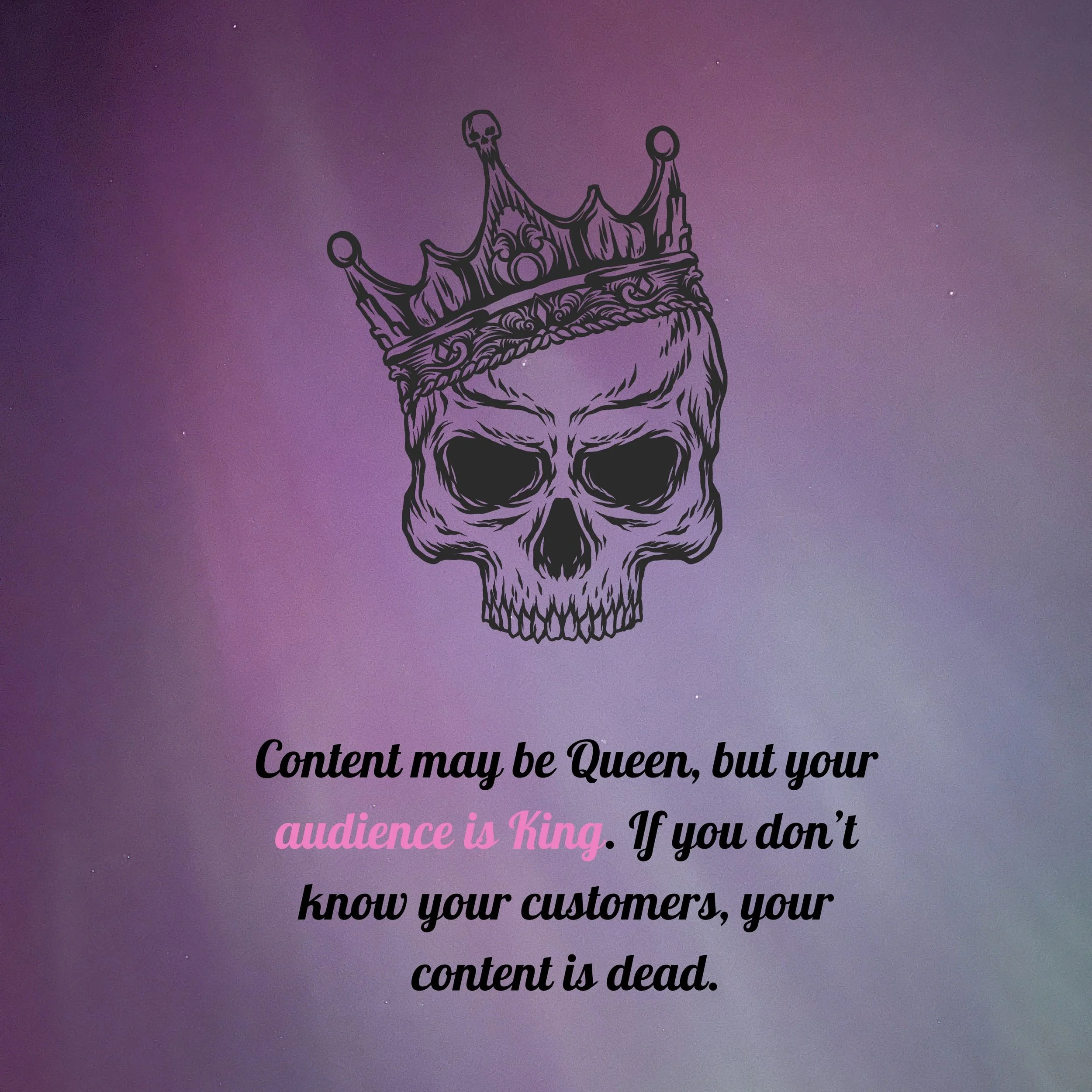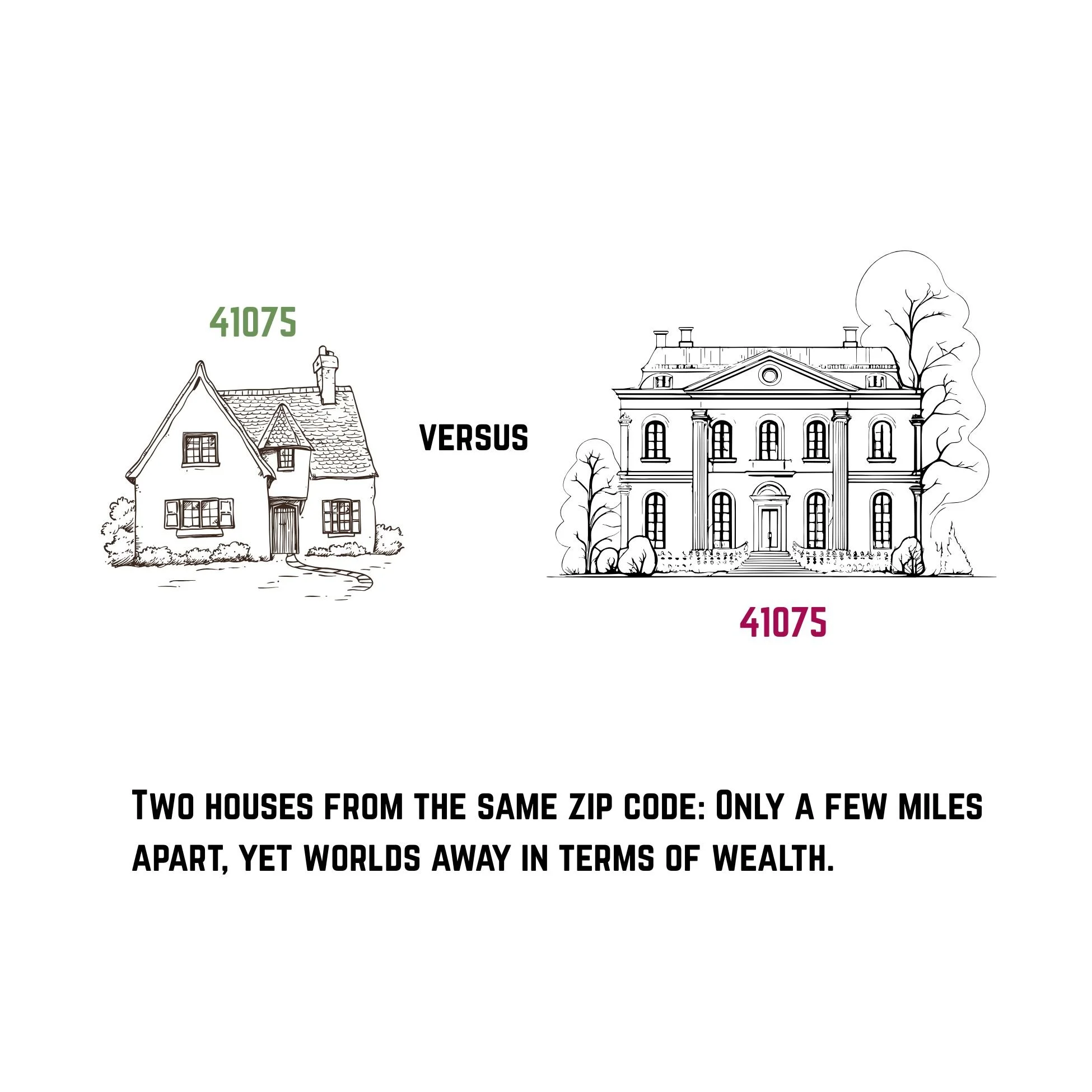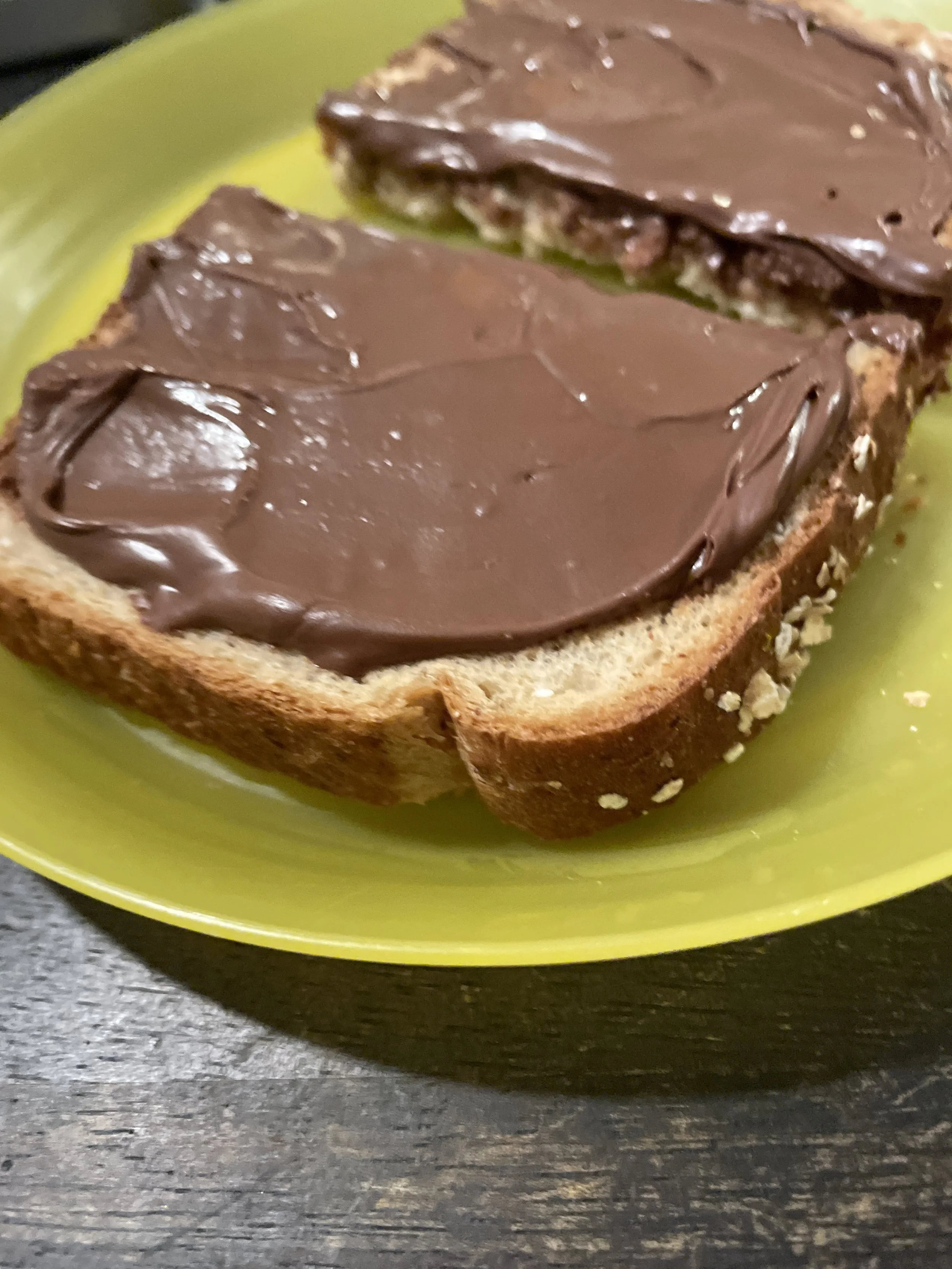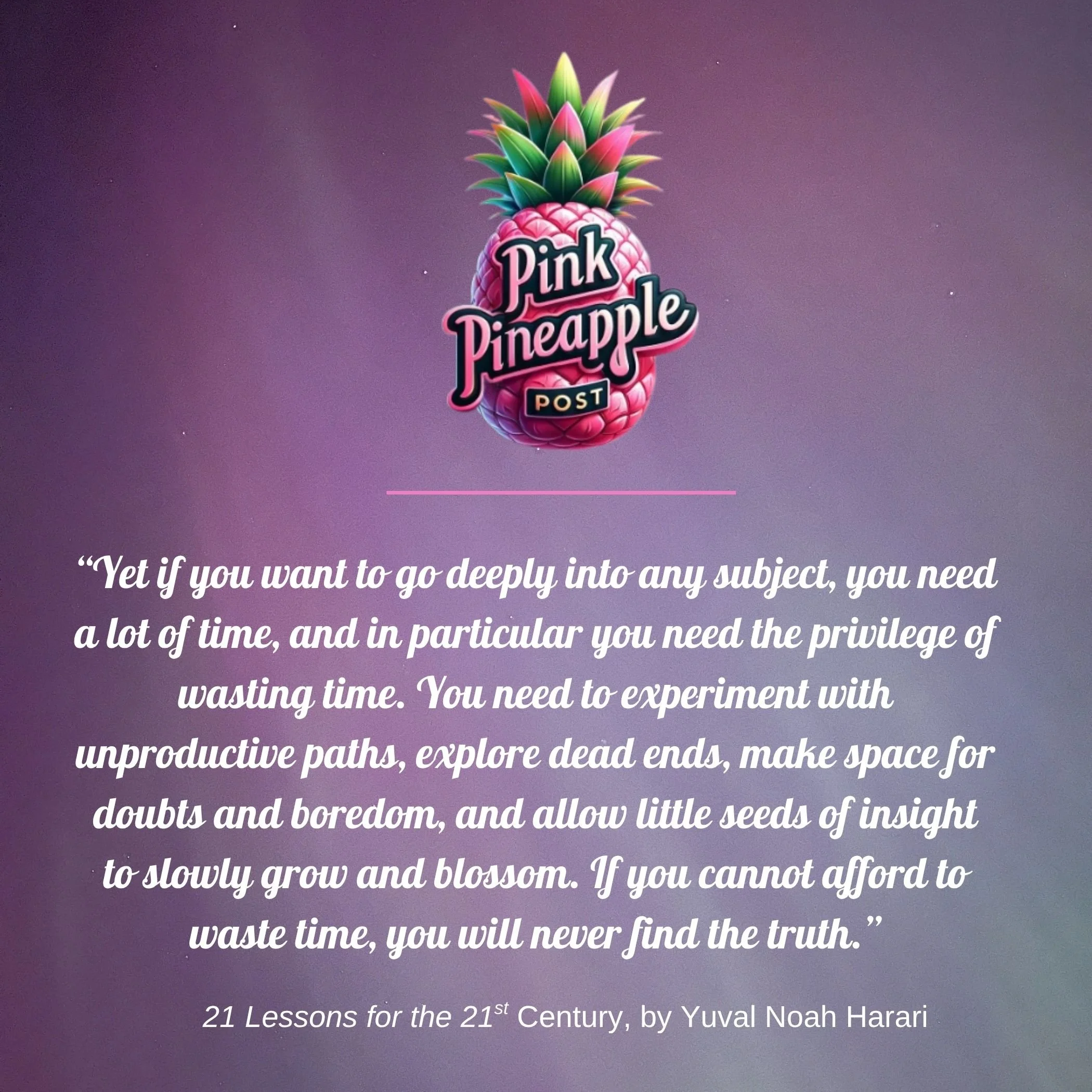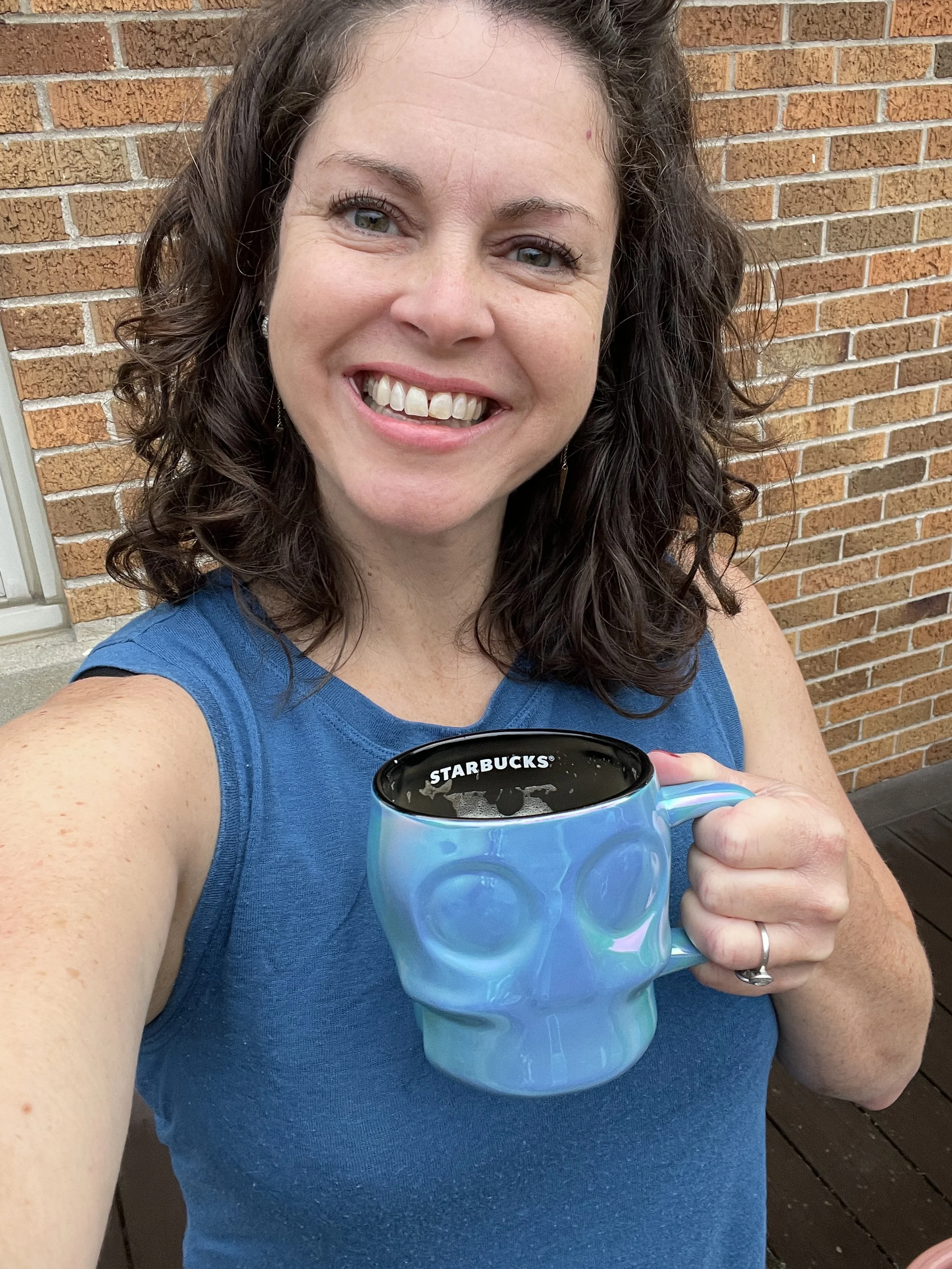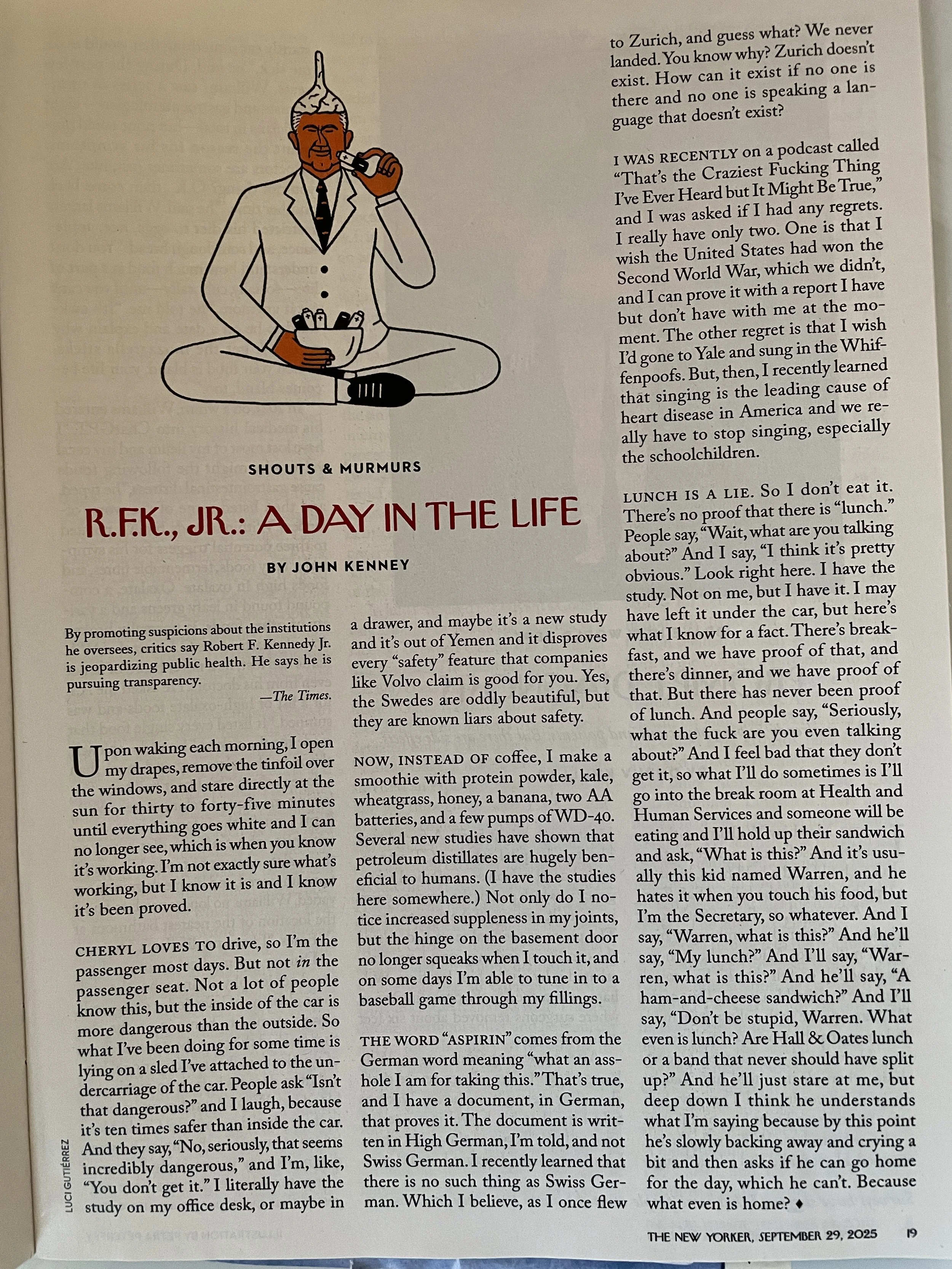Empathy vs. Sympathy, Knowing Your Customers and LOL Links
Is empathy out of fashion? Or are we just out of practice? Or maybe sympathy is adequate? Do we even know the difference anymore? Test your knowledge in today’s Word Wars…
Empathy vs. Sympathy
Know Your Customers Intimately: The Power of Embedded Empathy
Truly impactful marketing must rest on a bedrock foundation of customer empathy. At the highest level, we marketers have to remind ourselves that customers are real, living, breathing human beings. Not numbers to report to The Street. Not year-on-year sales. There is a person at the other end of every click, tap and swipe. The bigger your business, the easier it is to lose track of this simple truth.
But what is empathy as it pertains to a customer? You cannot know each customer in real life as a singular individual. And yet there are concrete actions marketers can take to embed customer empathy into strategy and execution.
Your Audience Is Queen
Content may be king, but your audience is the undisputed queen. If you don’t have an intimate understanding of your distinct audiences, it doesn’t matter how much content or marketing you produce. Your paid media strategy is meaningless. Your SEO plan doomed to limp along. Truly knowing your audience requires three things:
1. quality customer data
2. authentic, human-created, non-salesy content
3. deep empathy
Quality Customer Data
Many marketers make broad, sweeping assumptions about their customers based on purchase data, or demographics like approximate wealth based on zip code. I can’t speak for your town, but mine is a mixed bag. We all share the same zip code, but not the same pocketbooks. For example, former Bengal and current NFL commentator Chris Collinsworth lives in my town. My sweet 1950s Tudor is homey, but a far cry from Collinsworth’s massive colonial with a swimming pool on a 4.9-acre lot and a sweeping view of the Ohio River. We also have neighbors in apartments and tiny two-bedroom homes that can be bought and sold for far below today’s median home prices (which in mid-2025 hovers around $419k).
Lumping customers into generational generalities is similarly problematic. For instance, Ozzy Osborne and King Charles III look like twins from an age and general demographics perspective. They’re both men born in 1948, married twice, raised in the UK and quite wealthy. In this case, their similarities are utterly misleading. Their differences are much more vivid (and important) than their commonalities.
Demographics are attractive because they support a simplified, or clear, understanding of customers grouped by a single attribute. The reality is much more complex, with multiple interconnected dimensions at play.
My humble abode compared to Chris Collinsworth’s mansion…
Meet Mrs. Valeria
You know Ferrero Roche? The fancy gold-wrapped chocolate hazelnut confections? Their founder and CEO, Michael Ferrero, embodied an embedded empathy approach, through a single, vivid customer persona called Mrs. Valeria. “Mrs. Valeria is the mistress of it all — the CEO, the one who can decide your success or your demise,” he said. The billionaire genius behind Nutella, Tic Tacs and Ferrero Roche put a fictional character at the heart of every single business decision.
And did this simple strategy work, you ask? Well, it’s a $40 billion company with its products selling in 160+ countries. Do you have Nutella in your pantry, like 70% of the world’s chocolate hazelnut spread market? We do.
Once you have done this deep work of empathetically understanding your core customers, make sure you entrench the key stories and insights throughout your teams. This is not the exclusive purview of marketing, it requires what I sometimes think of as a “charm offensive” or a “knowledge roadshow.”
Distill your customer knowledge into a compelling presentation that simplifies your key findings into easily understandable and memorable customer stories. Then designate champions to present these stories to diverse teams throughout the business. Encourage everyone to incorporate these stories into all their work.
In knowledge management terms, this work is moving tacit understanding into concrete processes. Effectively, you’re giving employees a customer-focused north star that builds a focus on the longer term, even as everyone deals with daily emergencies and the latest numbers.
Image courtesy of Maeve Bozsan, 4, who stole my phone to take copious pictures of her favorite breakfast (Nutella toast aka tella-toast).
Make Authentic, Human-Created, Non-Salesy Content
There are two levels here. The first one is plain enough. Make sure humans are in charge of planning, writing and refining content. This does not mean you can’t integrate AI into the process – it just shouldn’t be wholly outsourced to machines. While the lines are blurring between what AI can create versus what humans make, my hypothesis is that ultimately readers (customers) will experience a deep, abiding feeling of fakeness once everything they read is created by machines.
One observation I have made is that AI-created content has an inhuman veneer of perfection. It’s similar to the lovely blurring effect a primer has on a woman’s skin. Smoothing it on diffuses fine wrinkles, evens skin tone and generally glows up the reality beneath. We humans are amazing, beautiful and colorfully varied, but we are fundamentally flawed and imperfect. The thing is, we have an abiding desire for perfection, so that smoothed-out AI version of our thoughts made concrete feels good. Yes, we think, that is just what I meant and could have written it myself. But we wouldn’t have written it that way. AI smooths away the beautiful, gritty imperfection of our humanity.
Twenty years ago when free online content flooded the Internet, we didn’t (couldn’t) see the distinction. Much like this moment, we are scrambling to define the difference between AI-generated and made by humans. With time, the human element will become much clearer. And of course, this moment is not quite the same as the dawn of the Internet and democratized content. More likely than one type of content having more value than the other, the ultimate output will be a seamlessly braided amalgam of AI-aided content, with higher volumes produced than ever before.
Additionally, there’s a mandate for brands and companies to operate with a certain editorial integrity. Marketing is, of course, “free” to the customer, with the intent of enticing them to buy. But for the deeply empathetic approach outlined here, part of the deal is that marketers should aim to build relationships and help solve customers’ problems, in return for which they receive increased customer attention and trust, and a top spot in the customer’s mind when it’s time to make a purchase.
Keep Humans in the Loop
Which brings us to the other mandate to keep humans in the loop. If I had to boil it down to a word, I might choose nuance. Imbuing words with the color and flavor of the deeply personal adds resonance, stickiness, even beauty that compels. A machine is not a human, however tempting it may be to assign it the traits of one.
Skills like close reading, critical thinking and masterful editing become prized in an AI-human collaboration. First, let’s look more closely at close reading. AI is perfectly designed for the squirrel brains who love to say TL;DR (too long, didn’t read). If you work with AI fans, you may often receive several hundred words generated in answer to a hastily-typed prompt. The question is this: how much attention do you put into reading these automatic influxes of text? Speaking only for myself, I’ll say not much. They are made for skimming, they invite your eyes to fly. It was created quickly, designed to consume quickly and imminently disposable. It's not a bad place to start, but no one ever stays there long.
Critical thinking is connected to close reading, but it goes beyond simply digesting into asking questions, probing for holes in logic and also making value judgments – is this content good? What might be missing? Is the overall approach sound? Does the topic still make as much sense in execution as it did in theory/planning? AI’s magic trick is to sound … fine. Just good enough. Sometimes a word salad can present as an attractive dish. It’s only in sampling a few bites that the bitter taste is uncovered.
This stage must also include vetting and verifying sources, and carefully checking for hallucinations. The final step is editing, which requires not only identifying outages, but also patching them, and polishing the whole thing for sparkle and shine. Here I must emphasize that editing is far different than proofreading. It is much more than fixing typos, and making sure formats are followed. An editor is a proxy for the reader, ensuring the content is coherent, compelling and as clear as possible. Editors also are guardians of the brand, bringing it to life with word choice, literary device, sentence structure and all those myriad miscellaneous details that stack up to “voice.”
Editing is a skill adjacent to but separate from writing. It calls for discernment and an eye for nuance. Ideally, an editor is embedded in the process from start to finish, from establishing and setting the vision, voice and understanding the audience, to assigning, reviewing and finalizing the work.
Listen Deeply to Your Customers
Finally, the value of talking and listening to your customers cannot be underestimated. Many large corporations have robust primary research departments and collect reams of verbatims. Don’t leave this qualitative goldmine to rot in an untouched file somewhere. Mine it for emergent themes and revelatory insights that demonstrate common pain points, motivations, hopes, dreams and fears. Most of all, put aside your specific business lens when digesting this information. Don’t look for how you can improve your product, craft a singular marketing message or make a better UX. Begin by understanding the complete picture of your customers as human beings. Resist the urge to comb through customers’ thoughts with a specific agenda in mind, and turn off the nagging worry that you may be “wasting time” when you could be planning a “quick-win” campaign for next week or next month. Understanding the value of spending your time on deep understanding is exactly the point. In an age where we obsessively track sales numbers by the day and week, and where our attention spans shrink by the minute, one of my favorite authors, Yuval Noah Harari, points out the real value of time in one of his books, 21 Lessons for the 21st Century.
“Yet if you want to go deeply into any subject, you need a lot of time, and in particular you need the privilege of wasting time,” writes Harari. “You need to experiment with unproductive paths, explore dead ends, make space for doubts and boredom, and allow little seeds of insight to slowly grow and blossom. If you cannot afford to waste time, you will never find the truth,” he argues.
You may not know exactly what you will harvest from the investment of time spent with your real customers, but you will reap results.
Embed Deep Empathy in Everything You Do
As a brand or company, you know exactly what you want your customers to do. You want them to buy more bananas. Open a savings account alongside their checking. Set up direct deposit, pretty please. Put another pair of shoes in their cart for the summer season. But what are your customers feeling? Are they overwhelmed at facing yet another day of meal-snack-pack-second-snack? Worried about having the funds to cover their mortgage or rent next month? Trying to summon the will to work out? Losing sleep over the deeply divided state of our country? Dreaming of escaping the rat race?
Of course, there is no way to know for sure what anyone is thinking, but we can do research to get a portion of the picture. Even better, we can put ourselves in their shoes – or think of a time when we were actually wearing those high heels, those muddy boots. Or maybe we know someone who was actually there. One step further? We can be human in our overall approach. We can stop selling our product for one second. We can change our goal away from immediate revenue to helpful education.
Empathy will look different across every different marketing scenario. What’s important is to shift your perspective. Tilt the camera just a bit so you can see things from the customer’s point of view. Put on hold your business objectives, and instead imagine the daily realities of your customers’ lives.
Happy Halloween!
It Feels Good to Laugh
Lately I find the news deeply unsatisfying in its surface coverage and simultaneously overwhelming in its vast scope and scale. The only relief is of the comic variety. I’ve been seeking out comedians and humorous writing as a balm to the current unsettling vibe that is our daily reality. Today, I’m sharing two examples in an effort to also bring you a laugh, or at least a smirk.
LOL #1: “R.F.K., Jr.: A Day in the Life”
I stumbled across this satirical essay about the Secretary of Health and Human Services, R.F.K., Jr., and found myself truly laughing out loud. It’s utterly ridiculous, of course, in the tradition of “A Modest Proposal” by Jonathan Swift, which if you’ll recall recommends eating babies as a solution to poverty. Read on for the essay in its entirety.
“R.F.K., Jr.: A Day in the Life”
From The New Yorker, September 29, 2025 issue
By John Kenney
“By promoting suspicions about the institutions he oversees, critics say Robert F. Kennedy Jr. is jeopardizing public health. He says he is pursuing transparency.” –The Times.
Upon waking each morning, I open my drapes, remove the tinfoil over the windows, and stare directly at the sun for thirty to forty-five minutes until everything goes white and I can no longer see, which is when you know it’s working. I’m not exactly sure what’s working, but I know it is and I know it’s been proved.
Cheryl loves to drive, so I’m the passenger most days. But not in the passenger seat. Not a lot of people know this, but the inside of the car is more dangerous than the outside. So what I’ve been doing for some time is lying on a sled I’ve attached to the undercarriage of the car. People ask “Isn’t that dangerous?” and I laugh, because it’s ten times safter than inside the car. And they say, “No, seriously, that seems incredibly dangerous,” and I’m, like, “You don’t get it.” I literally have the study on my office desk, or maybe in a drawer, and maybe it’s a new study and it’s out of Yemen and it disproves every “safety” feature that companies like Volvo claim is good for you. Yes, the Swedes are oddly beautiful, but they are known liars about safety.
Now, instead of coffee, I make a smoothie with protein powder, kale, wheatgrass, honey, a banana, two AA batteries, and a few pumps of WD-40. Several new studies have shown that petroleum distillates are hugely beneficial to humans. (I have the studies here somewhere.) Not only do I notice increased suppleness in my joints, but the hinge on the basement door no longer squeaks when I touch it, and on some days I’m able to tune in to a baseball game through my fillings.
The word “Aspirin” comes from the German word meaning “what an asshole I am for taking this.” That’s true, and I have a document, in German, that proves it. The document is written in High German, I’m told, and not Swiss German. I recently learned that there is no such thing as Swiss German. Which I believe, as I once flew to Zurich, and guess what? We never landed. You know why? Zurich doesn’t exist. How can it exist if no one is there and no one is speaking a language that doesn’t exist?
I was recently on a podcast called “That’s the Craziest Fucking Thing I’ve Ever Heard but It Might Be True,” and I was asked if I had any regrets. I really have only two. One is that I wish the United States had won the Second World War, which we didn’t, and I can prove it with a report I have but don’t have with me at the moment. The other regret is that I wish I’d gone to Yale and sung in the Whiffenpoofs. But, then, I recently learned that singing is the leading cause of heart disease in America and we really have to stop singing, especially the schoolchildren.
Lunch is a lie. So I don’t eat it. There’s no proof that there is “lunch.” People say, “Wait, what are you talking about?” And I say, “I think it’s pretty obvious.” Look right here. I have the study. Not on me, but I have it. I may have left it under the car, but here’s what I know for a fact. There’s breakfast, and we have proof of that, and there’s dinner, and we have proof of that. But there has never been proof of lunch. And people say, “Seriously, what the fuck are you even talking about?” And I feel bad that they don’t get it, so what I’ll do sometimes is I’ll go into the break room at Health and Human Services and someone will be eating and I’ll hold up their sandwich and as, “What is this?” And it’s usually this kid named Warren, and he hates it when you touch his food, but I’m the Secretary, so whatever. And I say, “Warren, what is this?” And he’ll say, “My lunch?” And I’ll say, “Don’t be stupid, Warren. What even is lunch? Are Hall & Oates lunch or a band that never should have split up?” And he’ll just stare at me, but deep down I think he understands what I’m saying because by this point he’s slowly backing away and crying a bit and then asks if he can go home for the day, which he can’t. Because what even is home?
LOL #2: “Friends with Benefits: Caffeine, Naps, and Other Sleep Flings”
Substack is its own alternate universe, a rabbit hole of epic and often literary proportions. In my recent wanders, I stumbled across a quirky Substack from the Loftie brand, which sells science-based alarm clocks that work with your natural circadian rhythms to promote better sleep. Their Substack is all about sleep, which is adjacent to their products but not centered on sales. One of their essays is a charmingly hilarious piece that uses the conceit of the FWB (friends with benefits) to examine how our behaviors can directly impact our sleep. In this instance, the humor propels the reader forward and also facilitates a certain open-mindedness to the scientifically sound suggestions woven throughout.
“Friends with Benefits: Caffeine, Naps, and Other Sleep Flings”
From the Loftie Substack, The Little Book of Sleep, published May 14, 2025
By Becca Silver
Here’s the excerpt of the essay to get a flavor:
Who doesn’t love the old FWB (friends with benefits)?
Me.
(With the same amount of enthusiasm as the baby wanting to go to the Four Seasons Orlando.)
While they may bring you unbridled amounts of dopamine and serotonin after Wednesday night treat runs to Steak ‘n Shake—where you sit in the car and talk about nothing and everything, and the world feels like it’s falling away and you are the only two people who exist in that moment—in reality, friends with benefits actually leave you with years of emotional damage to unpack with your therapist, Lisa, deep-seated doubts about your capability to love, and immense daily regret over replying “yes” to “have you ever thought about us making out?” a few White Claws in, in your sophomore year college dorm room.
While you’d think those low feelings would be enough to break the FWB cycle, you continue on. For three years. Through international trips, long-distance, no-contact phases, three breakups, and a near-miss living in a studio apartment together.
Simply put, while they may feel good in the moment, these highs lead to immense lows, much like drugs and stimulants. So why do we keep going back? (c’mon, this must apply to at least one of you, right?) The cycle of addiction. The highs are so high, we chase them and ignore the crashes.
Now here’s where I should transition into connecting friends with benefits and sleep aids/suppressants, to justify to my boss that including a brief memoir of my traumatic FWB experience was essential to emphasize the harmful effects of sleep-related tools on the human body (emotionally, physically, spiritually, holistically, existentially).
But truly, these sleep interventions really do parallel the FWB cycle in terms of (just emotional and physical) regulation.
Take caffeine. It boosts dopamine, norepinephrine, and adrenaline by blocking adenosine receptors in the brain. You may feel like you are #peaking in the first 1-3 hours of caffeine consumption (cue the urge to text everyone in your phone “I love you”), but by hour 5-8, when adenosine floods back in, you’re groggy, irritable, and ready to scream at your girlfriend for being two minutes late to dinner (personal problem?).
And as an extra special bonus, just like when you finally cut off that extra *special* friend (it’s not an if, it’s a when—trust me), who was there for you during your highest of highs and lowest of lows and whom you can’t fathom living without, when you remove caffeine from your life in what was done as an act of self-care, you will be the lucky recipient of withdrawal symptoms such as headaches, low mood, trouble focusing, and fatigue #lit.
Wait, wait, there’s more! The caffeine crash hits hardest rightttt before bed, when you least expect it.
Just like how you can numb yourself from the painful end of your FWB with work, friends, and Lady Killers II by G-Eazy, and all of the memories only come flooding back as soon as you turn your lights out for the evening, causing you to lie awake for hours, paralyzed in thought until the wee hours of the morning—caffeine’s half-life is give hours hours. That delightful 3:00pm latte? It’s like drinking half a cup at 8:00pm, and not being clear of it until 1:00am.
So next time someone asks you to grab an afternoon coffee or engage in FWB activities, just say you’re detoxing. No context needed.
Becca’s use of personal humor and the helpful conceit makes the material pleasurable to read, and helps your mind stay open to learning. Read the whole essay at The Little Book of Sleep.

